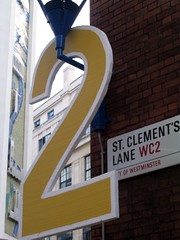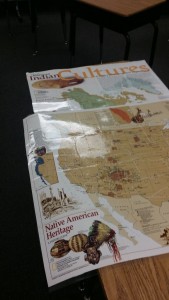Classroom Update #2 for 2015

Since I’m not anywhere close to writing these updates on a weekly basis, I’m not going to label them that way for this year. I’m instead going to concentrate on writing for you my dear readers, when I can, and let the posts fall where they may.
Maps for education
 I remember way back in the dim mist of time as I started edublogging, someone (probably Scott McLeod) asking if we even needed paper maps and globes in the classroom as technology seemed to be making them superfluous (it was early days with GoogleEarth).
I remember way back in the dim mist of time as I started edublogging, someone (probably Scott McLeod) asking if we even needed paper maps and globes in the classroom as technology seemed to be making them superfluous (it was early days with GoogleEarth).
While I’m happy not to have the traditional class maps that I grew up with which tend to be bland and rapidly dated, I use maps and my globe on a weekly basis in the classroom. Since we’re now studying the European “discovery” of America/Age of Exploration/Age of Exploitation (I’ll leave it to you to select your favorite lens), having a physical globe is really important to show the journey, etc.
Next, I have built a pretty good collection of maps to go with my science and social studies curriculum. Unfortunately, that has been mostly 6th grade materials, so I’ve had to invest in some new ones this year. The ones for Pre-Columbian America though were already there. These two from National Geographic are mainstays for me. I especially like the North American Indian Cultures map, since it shows areas, not with neat political lines (which were meaningless until European surveyors arrived and imposed a grid pattern on the country).
This story from NPR’s CodeSwitch blog made the rounds on Facebook as school started. I would like to add that particular map to my collection, as it looks very interesting. I like the idea of having the actual Indian names, and the idea of someone of that culture creating it is good too. I’m not so crazy about those current political map lines. The mapmaker is self taught, which is pretty damn impressive, but it is still not as visually elegant as the National Geographic Indian Cultures map. The design really shines in that map so I will definitely be keeping that one.
I was disturbed that in some of the Facebook comments when the blog post on the new map came out, folks were saying things like, “Finally I have a map that shows the Indian presence and this wasn’t just empty territory.” That disturbs me because clearly the maps I have, have been around for a bit (the Heritage map dates to 1991 making it older than my teenager). As I said, I think it’s very important for Native Americans to be creating the documents on their culture, and it sounds like this map is better on naming conventions, but if you didn’t have a resource of explaining the idea that there were a lot of different Indian cultures that flourished in the Americans before Europeans arrived en masse before now, I think you weren’t looking very hard.
Defiance of authoritay!
That is a deliberate misspelling meant to evoke the pointlessness and futility of Eric Cartman (in South Park), since that is often what teachers sound like when dealing with a defiant student. I’ve been reflecting on this both because of current news, involving particular cases and because there is a general unease in California sas defiance of authority has been removed as an officially suspendable behavior from the Education Code (teachers can still do out of class suspensions for this). I’ve had some issues in my classroom this year and is has been an issue for the past few years with other teachers in my district. I will talk generally and this will mix current with historic experience, and my own and others, so that no child will be named (because that would be illegal).
I’ve had some issues over the years with students refusing to do work, or follow directions. It’s not a regular thing, but it happens to all of us at some point. There are a variety of reasons it can occur from the kids being kids, to the adults (that would be you and me) lacking context or setting up the kids for this behavior (mostly unknowingly). Sometimes, both these intersect. Here is my rule of thumb. If the refusal is not causing an immediate disruption of other students learning, and the student is refusing to go to the office, or whatever, I may ask for the principal or office staff to remove the student. Sometimes it can take a bit of time to get them to go, but they’ve never had to drag someone out.
But I also may judge that while the behavior will be dealt with, doing so in front of the whole class may not be the time and place for it to happen because it can turn something that is not a big deal for the class as a whole into a confrontation that is. It depends on the situation, and the kid. What it shouldn’t be based on is the kid’s race or ethnicity. I’ve let a moment like this pass, and lo and behold the student in question started to do their work. It even happened recently. It’s happened with students of both genders, and various racial and ethnic backgrounds. I’d like to think I’m even handed, but what I do is think about it afterwards. Not in just some self-justifying way, but could things have gone down differently. If you can’t honestly even ask that question, that’s a problem.
The other thing I have to remind myself, because I can be a control freak in the classroom is that not everything has to happen at that time and place. I remember years before I had a kid seeing some parenting in action in a store in Oakland. The boy was around 12 and being a pain in the ass at the check out. His mother was silent, but after a while, she just said in a calm and quiet voice, “We’ll deal with this when we get to the car.” She wasn’t menacing, but it was clear that there would be a reckoning for his behavior. It taught me that not all parenting is on public display. The same applies to discipline in teaching.
What’s the point?
Speaking of following directions, I’m having students write the essays that go with the unit I complained about here. The last poem in the unit was one by Langston Hughes, “Theme for English B” I don’t think the kids entirely got it, but it was interesting to have them read a poem about writing a theme essay before they had to do it. Starting the year with a more diverse class made the discussion about the how a writer’s background comes through in their writing much more rich. Still, many of the kids did not get the point about the centrality of Hughes’s experience as an African-American to his writing until it was directly pointed out to them. Repeatedly. Perhaps kids are color-blind, but I really can’t teach that way because life is not. That being said, you do need to think how to approach the subject with 10 year olds.
So now onto my point with the sub-head above. One student did get point the character is making in the poem about being the only black student in a class. She did not, however, answer the question in quite the manner it was put to her (how does the author’s background come out in the poem). What’s more important for a kid to learn? I know what text author thinks, they want kids to understand a specific form of structural analysis of literature. Maybe the student did understand that (it borders on being a recall question after all), but picked out the really critical line when the poem’s narrator shares this salient fact. That too was a skill the kids were supposed to pick up so she did well with it even though I wasn’t asking it at that particular time. Anywho, this brings up that you can have your checklist and your skills and sometimes the kids will show you something else that you weren’t asking for, or expecting, but it pretty interesting nonetheless.
I’m not having any great thoughts on Math or Science, and this post is rather long at this point, so maybe I’ll try to post on that next week.
Image credit: Giant number two on Flickr




